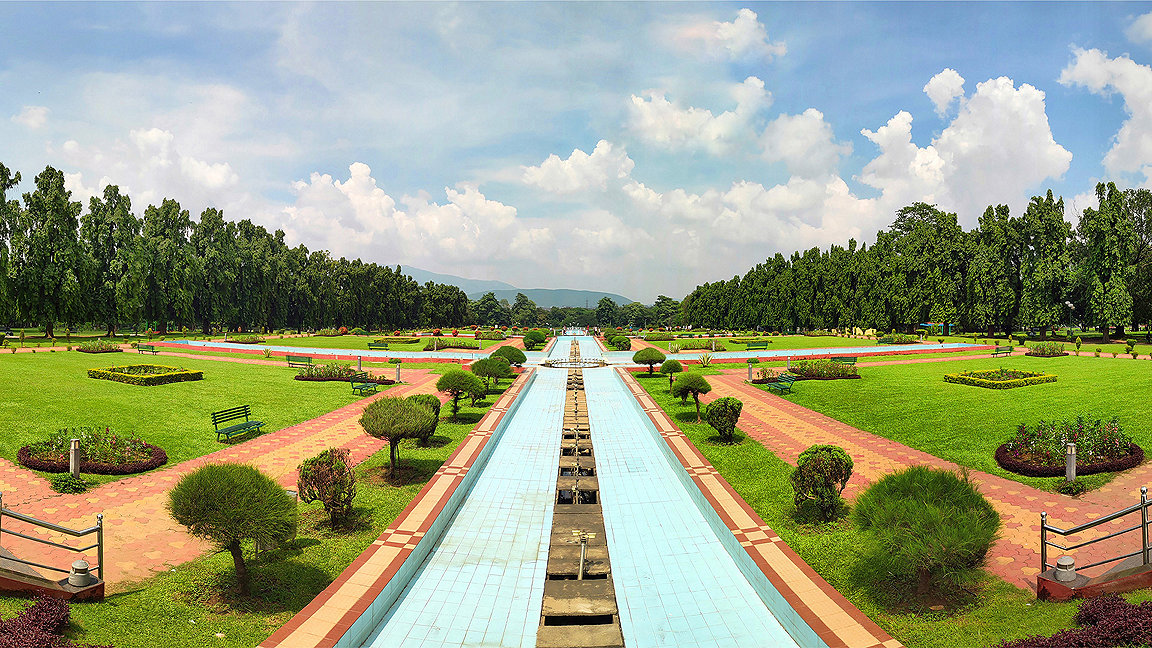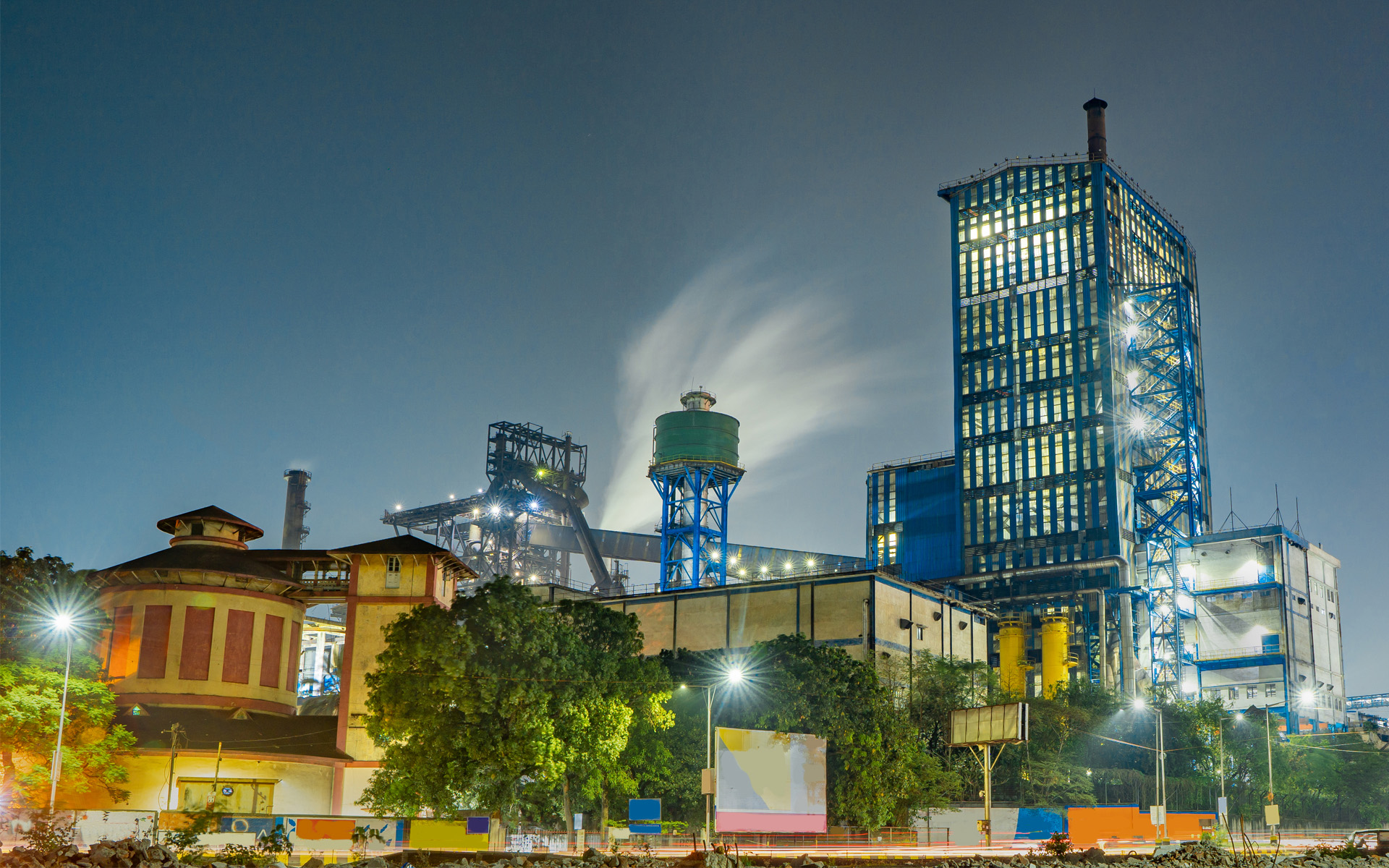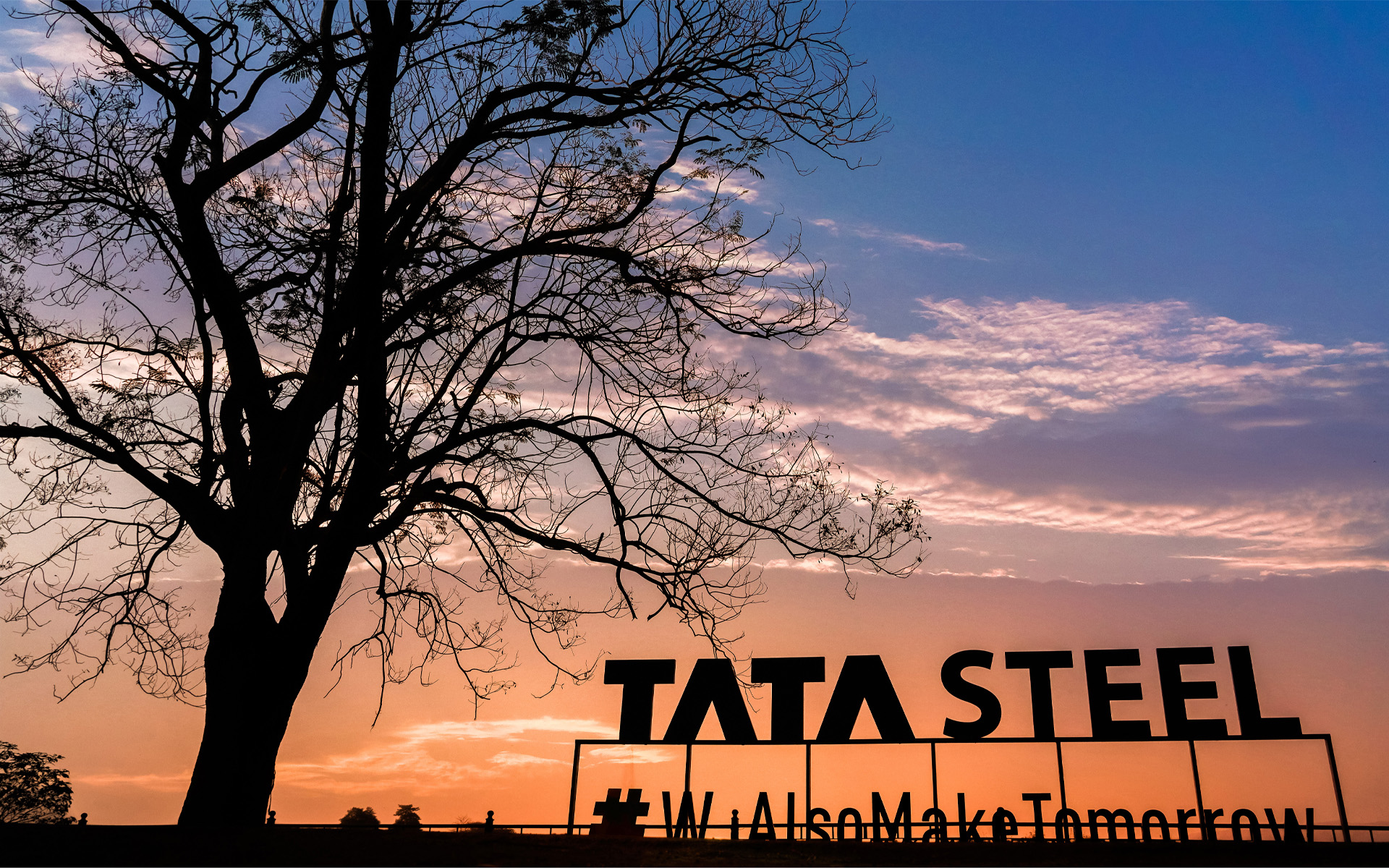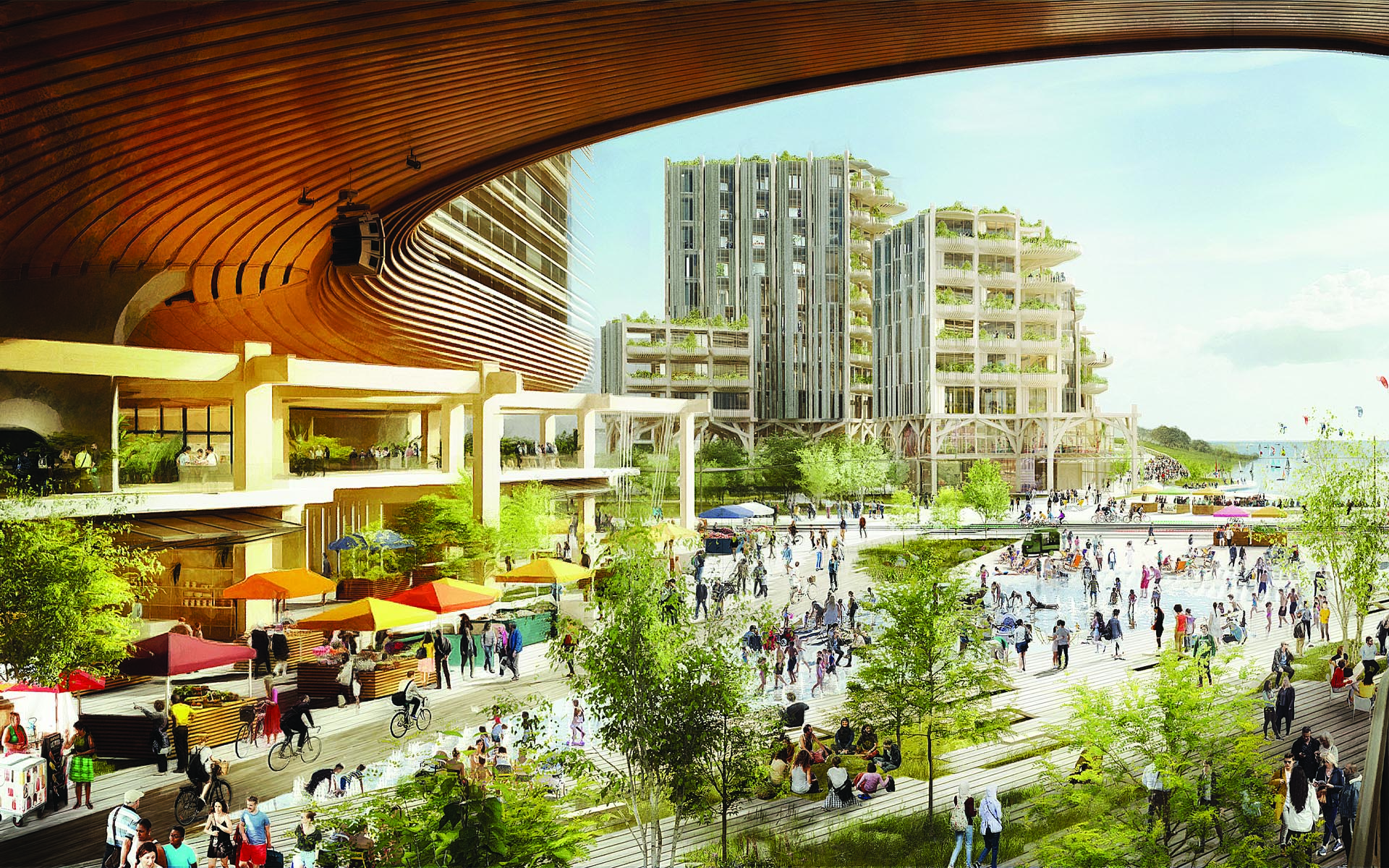
Jubilee Park, Jamshedpur
Corporate-built or sponsored cities are appearing all over the world, from Toyota’s Woven City in Japan to Neom in Saudi Arabia. At their early 20th century peak in the US, there were around 2,500 ‘company towns’. They appeared an ideal solution for a big employer to house lots of workers in the same place and keep them happy.
However, running a town or city can be more complicated than it appears at first. There are implications for surveyors in the creation of the city and the workers who eventually live there. What lessons can be learned from one of the world’s oldest corporate cities, Jamshedpur in India?
Architecture professor Gauri Bharat, 54, lives and works in the Indian city of Ahmedabad these days. But she still considers herself “a fourth-generation Jamshedpur kid.”
Her great grandfather arrived in the early 1900s in search of work. In 1907, Mumbai-based entrepreneur Jamsetji Tata had leased a little over five square miles, including two villages, 150 miles west of Kolkata, to build a steel plant in 1907.
Bharat’s parents were both doctors in the local hospital raising her and her sister in a home provided by their employer. “The quality of life [was] quite phenomenal, the roads were wide, it was clean, water and electricity were excellent,” she says.
Tata, which built the steel plant, the hospital and most of the city in which Bharat was raised, is now one of the largest private companies in the world. And in place of Sakchi stands Jamshedpur, a sprawling metropolis housing more than a million people. It is the biggest corporate neighbourhood in the world.
Tata’s Jamshedpur land was leased first from the British colonial government, then, after independence, from the state of Bihar. Today, most is held under rolling 30-year leases. The Jamshedpur Notified Area (JNA) is administrated by Tata Steel Utilities and Infrastructure Services Limited (TSUISL), a private company owned by Tata, alongside an unelected state body, Jamshedpur Notified Area Committee.
More than a century after its inception, Jamshedpur fits uneasily into the world’s largest democracy. Barring policing, education and a handful of others, services are provided by Tata for free – or at a fraction of what they cost to supply – after the city’s founding principles, designed to provide the best possible living environment for Tata employees and their families.

“If you worked [for Tata] you had the best schools, the best colleges, the hospital. You didn’t have to step out of your colony, it served all your needs. But the moment you stepped beyond Tata land, roads and infrastructure fell off a cliff” Anonymous former resident of Jamshedpur
But those administering the land controlled by Tata, which house roughly 700,000 people and is known as the JNA, are not elected – a feature that has been contested in India’s courts since the 1980s. As Jamshedpur has grown, increasing numbers of its residents have fallen outside those areas benefitting from Tata’s de facto municipal subsidy. Today, even as the economics of running one of the world’s largest conglomerates push Tata to scale back its involvement in Jamshedpur, many are lobbying the company to expand it.
Tata-owned businesses based in Jamshedpur have 22,000 direct employees, making everything from steel to cars (Tata Motors is the second largest employer after the steelworks), paint and wire, or providing services including business consulting or electricity. Thousands more residents are employed indirectly through an army of consultants and outsourced suppliers providing services to Tata-controlled companies. Many others are family members or those working in supporting services. When she was growing up, Bharat’s home also accommodated a family of seven in separate quarters, whose two adults worked as maids, cooks and gardeners.
Leases granted by Tata to businesses and residents within JNA include considerable rights for Tata and terms that would make many businesses or homebuyers in Mumbai or Kolkata think twice about being located there.
Ronnie Dacosta, 72, returned to Jamshedpur from Bengaluru in 1984 to run a family-owned hotel in the central neighbourhood of Sakchi. On a lease from Tata, it was built by his grandfather in 1940, as the company sought to develop Jamshedpur’s local economy.
“Whenever they want, they can take it back; they will only pay you for the cost of the construction [of your building],” he says.
In 1940, his grandfather accepted the stringent terms of the lease because of the potential he saw in the business, but he built the family home on freehold land he bought in Jugsalai, a nearby area not controlled by Tata. Today, Dacosta is confident Tata will respect his interests in the hotel – he sees the company’s rights over the land hotel as fair exchange for its role developing and maintaining the local economy and its services. “They respect the fact that my family has been here for 100 years,” he says.

Subsidised services and healthcare
Through TSUISL, Tata provides most services to most residents within JNA. These include power, water, sewage disposal and treatment, refuse collection, roads and streetlighting, maintaining and developing public spaces such as parks and gardens, and certain public health measures like vaccination. A 1,000-bed hospital provides healthcare for free to Tata employees and their families; other residents must pay. Policing, education and other healthcare is provided by Bihar and Jharkand states.
Carrying out daily refuse collection, drain and street cleaning alone requires 800 employees. More than 43,000 houses are treated with anti-mosquito measures to restrict diseases like malaria and dengue fever, whose levels are among India’s lowest. “It is commonly said that Jamshedpur is one of the few cities in India where one can drink water straight from the tap,” writes Mircea Raianu, in his 2021 book Tata, the global corporation that built Indian capitalism. TSUISL says water leakages are a fraction of the national average.
All services are subsidised or funded entirely by Tata, with the exception of power, capped by a government regulator. The power grid provides largely uninterrupted power throughout the year, a rarity in Indian cities; even streetlights are out of action less than 1% of the time, according to TSUISL. JNA’s 30 parks, cover 162ha – 37% of its area – a record for any Indian city.
While TSUISL is currently considering expanding the scope of its services, today it covers only JNA for the most part. Jamshedpur’s wider metropolitan area houses another 700,000 (according to India’s 2011 census), concentrated in the townships of Adiyapur, Mango and Jugsalai.
Successive plans for the city going back to 1909 have highlighted stark contrasts in the quality of housing and services between JNA and the rest of the city, where there are overcrowded informal housing areas known as ‘bastis’ accommodating mostly low-caste residents. “The sharp inequality in access to infrastructure, services, and adequate housing between the planned and unplanned parts of the city is a key issue,” observed a 2020 report on Jamshedpur by the Bengaluru-based Indian Institute for Human Settlements.
“It is commonly said that Jamshedpur is one of the few cities in India where one can drink water straight from the tap” Mircea Raianu, author of ‘Tata, the global corporation that built Indian capitalism’

“If you worked [for Tata] you had the best schools, the best colleges, the hospital. You didn’t have to step out of your colony, it served all your needs. But the moment you stepped beyond Tata land, roads and infrastructure fell off a cliff,” recalls Piya [not her real name], who grew up in Jamshedpur and now works for a large property company in Mumbai.
Critics of the current arrangement, including many who live in the bastis, say that even within JNA service provision varies wildly. They want Tata’s land to be joined to the rest of the city by a single municipal body, arguing that their right to elect local administrators is protected by India’s constitution. They scored a victory in 2018, when India’s High Court ruled that Jamshedpur residents were entitled to a “third vote”, electing city authorities as well as those at a state and national level.
The public response to the ruling illustrated widespread support for the status quo. Residents took to the streets to oppose what they said would be the disastrous impact of returning control of services to the state government. In 2019, Jamarkhand state’s High Court designated Jamshedpur an “industrial township” – a move which protected the existing arrangement.
“There is demand for us to supply power in those areas. Generally, the citizens clamour for our services. They believe they are extremely reliable,” says Tarun Daga, managing director of TSUISL.
But extending services would represent a reversal of sorts. In the 1990s, Tata ceded responsibility for administering local schools, that were placed under individual private trusts. “How will a steel company look after education and make it go to higher levels of excellence?” asks Daga, explaining the move. The move followed a tightening of purse strings at Tata during the 1980s and 1990s as the liberalisation of global steel markets saw the company restructure much of the Jamshedpur plant.
Mircea Raianu says the industrial township status is likely to stick, guaranteeing Jamshedpur’s status as the world’s largest private city, as growing affluence of non-JNA residents erodes the gap between the haves and the have-nots. “My guess is the conflict will settle in the next couple of decades since the surrounding areas are becoming more industrially developed. As [Tata] operations downsize and standards of living go down within [JNA] the privileges of being an employee will matter less.”
“The quality of life was quite phenomenal, the roads were wide, it was clean, water and electricity were excellent” Gauri Bharat, architecture professor and former resident of Jameshedpur

Disputes over data
When Jamshedpur was first established in the early 20th century, concerns about data collection and privacy of the kind we have today were not an issue. Now though, it’s one of the main concerns in the creation of a corporate neighbourhood. Who is collecting residents’ data and what are they doing with it?
In 2017, Google-owned Sidewalk Labs announced plans to develop a five-hectare tech city on Toronto’s Quayside waterfront. From autonomous cars and heated cycle lanes to sensors monitoring everything from emissions to pedestrian crossings, advocates heralded a new type of digital-first city, built from the internet up.
But the project was dogged by privacy concerns. By autumn 2018, Anne Cavoukian, who spent nearly two decades as the information and privacy commissioner for the Canadian province of Ontario, resigned from her role advising Sidewalk Labs over the question of who would own the data gathered from Quayside’s residents as they went about their lives.
Cavoukian wanted the data de-identified ‘at source’ when it was collected. This way, city authorities could tell that resident X was driving, walking or cycling, but would be unable to identify them. Sidewalk Labs responded with proposals for a civic data trust – a body comprising local political representatives and technology firms – that would decide what to do with the data. Cavoukian resigned, calling on Waterfront Toronto, the municipal body overseeing the development, to lay down the law. By May 2020, Sidewalk Labs had abandoned the project.
Cavoukian cautions against the assumption that public bodies will provide more trustworthy custodian of residents’ data. “I can assure that the government is just as bad as the technology firms when it comes to exploiting people’s personal information,” she says.

Big spending by Silicon Valley
In the US, the major technology companies have been wrestling with how to play a role in civic life. Rapid gentrification in cities like San Francisco has led to growing numbers of homeless and a scarcity of affordable homes for non-tech working locals. In the first nine months of 2019 alone Apple, Google, Facebook and Microsoft pledged a total of $5bn in separate efforts towards providing better housing to those with whom the tech giants shared their streets.
But critics cried foul, noting that much of this was aimed at financing private housing development, an enterprise that could one day generate profits in a way that paying tax never would. Google’s $1bn pledge in June 2019 included leasing its land and providing loans to private developers. Apple’s $2.5bn commitment included funding for private projects in Silicon Valley and the Bay Area, through a $1bn affordable housing investment fund.
Those questioning the devotion of major technology firms to addressing their impact on local housing markets pointed to the case of Seattle a year earlier. In May 2018, the city introduced a homelessness tax of $275 per worker on the city’s largest employers to fund homelessness outreach and affordable housing. Amazon halted construction on a new 17-storey office in protest, saying the tax “forces us to question our growth here”. A month later the city abandoned the tax.
But at a smaller scale, US towns boast many examples of corporate housing projects stemming the social costs of gentrification. In Aspen, Colorado, the Aspen Skiing Company, which operates the resort, started an affordable housing project for its workers in the 1970s. “We were being overrun by growth, we needed a whole section of Aspen that would be historically preserved, or the town would become a ghost town of empty second homes,” says Auden Schendler, head of sustainability at Aspen Skiing Company and a local resident.
Today the company provides more than 800 local employees with homes they rent or own (with price increases pegged to consumer price inflation). The measure looks prescient: the median price of a home sold in Aspen, outside of this affordable housing project, in the year to October 2021 was $9.4m.

